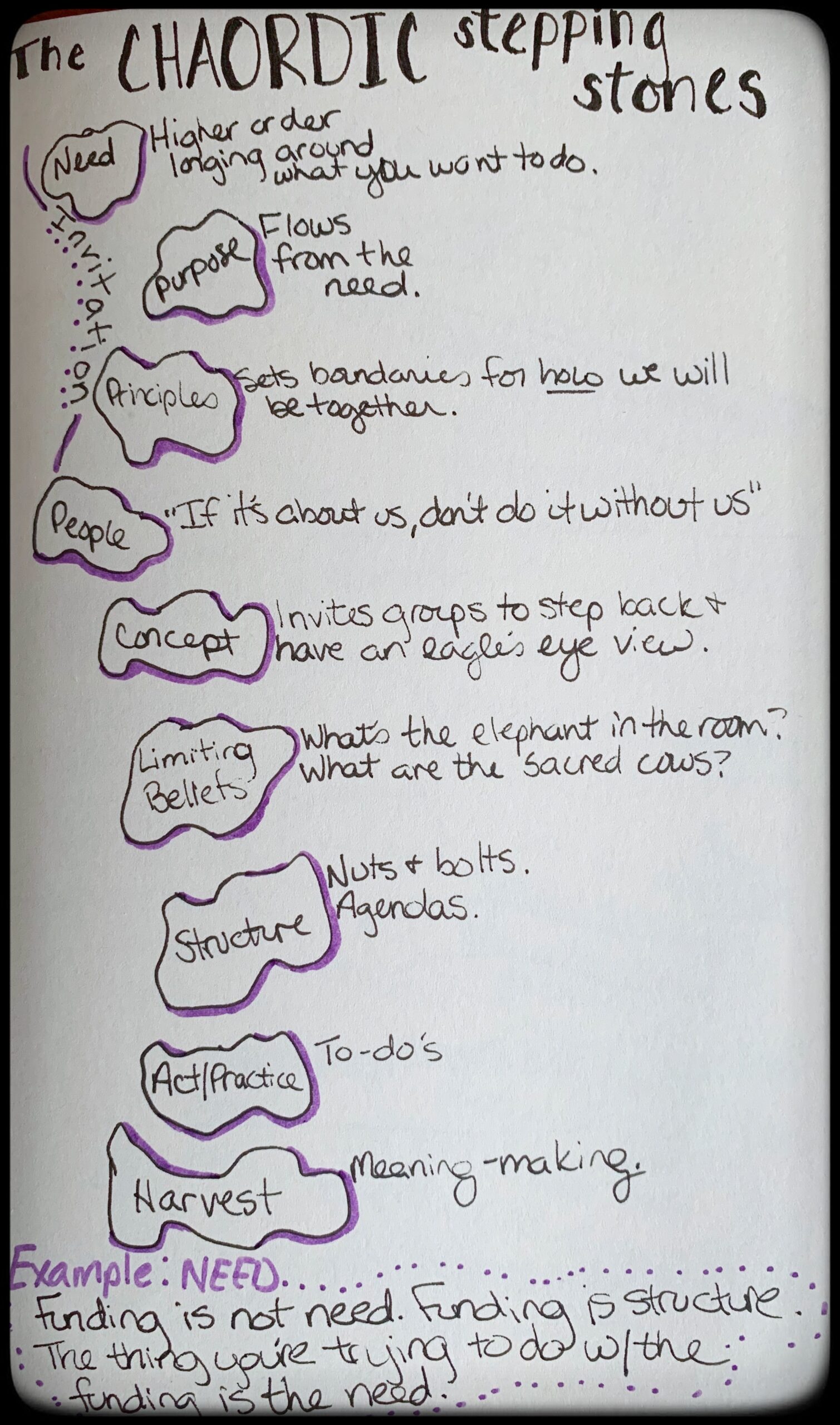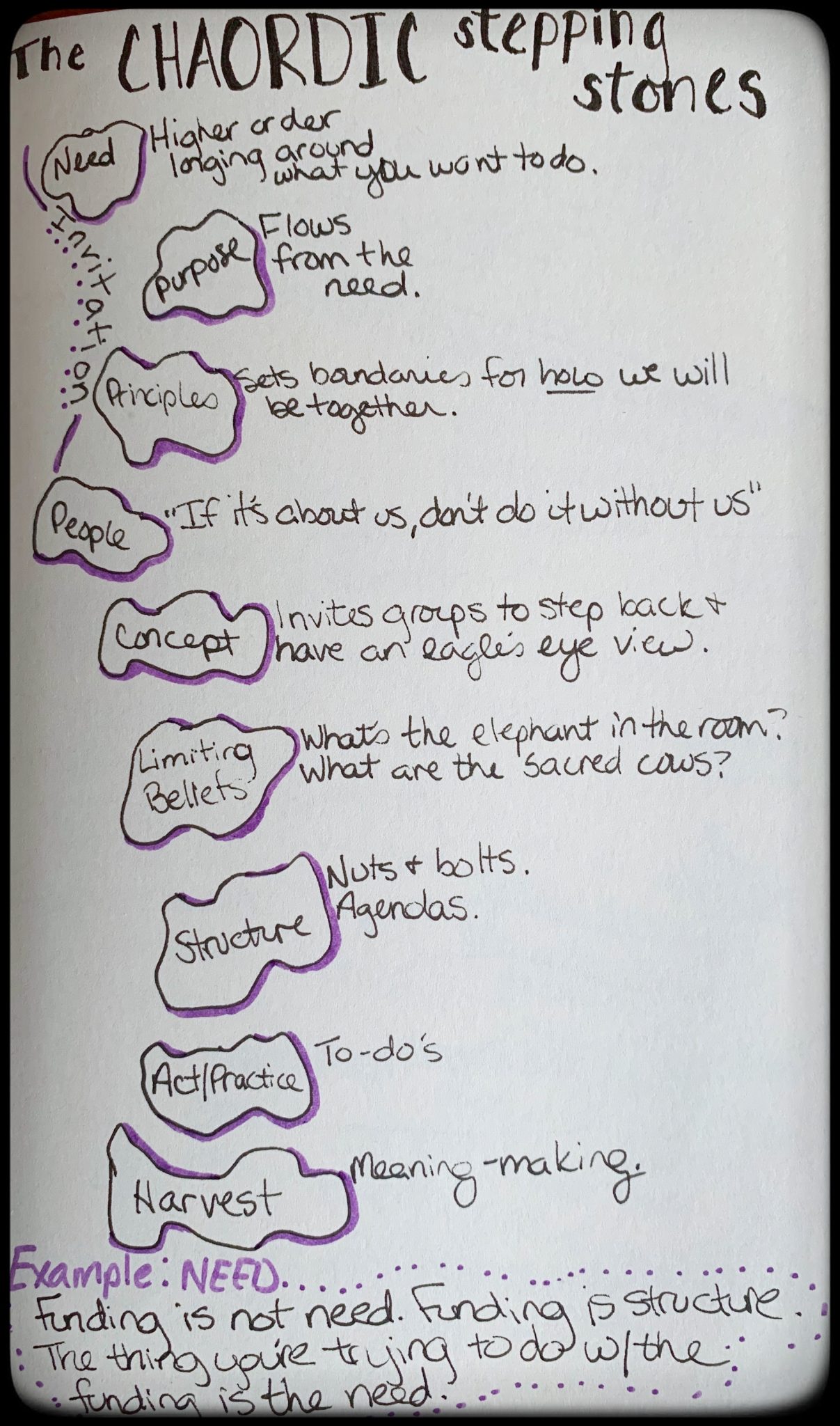Does it ever feel like you’re spinning your wheels on a project? Or you want to be innovative, but keep falling back on the same old routine? How about those times when you get stuck in analysis paralysis or a cycle of perfection – needing the project to be perfectly planned before acting on it?
During 2020, the Network Literacy team launched the Practicing Connection in a Complex World podcast. In the weeks and months leading up to the rollout, we did all the usual things associated with starting a new project:
- Examined our own motivations, interests and hopes for the podcast.
- Surveyed and held discussions with audiences and leadership.
- Discussed – at great length – formats, roles, topics, participants, innovations.
- Made some decisions and tried them out.
- Got stuck, unstuck, and stuck again.
We knew we needed to do something differently. What we did was so useful that we thought we’d share it here. Not only did it help us get unstuck, but using this tool didn’t negate any of the previous planning we had already done, and it resulted in ensuring that each podcast topic receives unique attention. That tool is called the Chaordic Stepping Stones.
Typically used to plan effective meetings, the Chaordic Stepping Stones can actually be used to plan just about any project or initiative. Taking just a few minutes to stop and think through these questions can help you realize the wisdom of the Navy SEALS that “slow is smooth and smooth is fast.”
But first, what kind of word is ‘chaordic’?
‘Chaos’ + ‘Order’ = Chaordic. The thinking behind this word mashup is that learning and growth often occur in the balance of these two concepts. Chaos refers to the existence of multiple voices, perspectives, different/new ideas, etc. Order refers to structure. Too much chaos is unproductive; too much order is stifling. The Chaordic Stepping Stones framework helps you think through the minimum amount of order you need for the chaos to be productive.
The Stepping Stones
While planning your next project or meeting, you can use the following questions to reflect on the most important aspects of what will make your work effective and impactful. Answer one question in each section or answer them all – spending even a little bit of time on these stepping stones will help!

Jessica’s notes from an Art of Hosting training, May 2019.
The Chaordic Stepping Stones include:
- Need
- Purpose
- Principles
- People
- Concept
- Limiting Beliefs
- Structure
- Act/Practice
- Harvest
For this article, we’ll be covering NEED, PURPOSE, PRINCIPLES, and PEOPLE.
NEED
First you’ll need to reflect on the NEED. The need is the reason you feel compelled to do the work. For example, I was recently working with a group that outlined their need as “we need to be able to communicate our message better.” While they definitely needed to do that as part of their strategy to address the need, that wasn’t the actual need they were attempting to address. After a little more discussion, the real need emerged – that there are no transportation options for those under age 60 who need it.
Why are you doing this project/holding this meeting? Why is it important?
What is the need that we are addressing through the work of this project/meeting?
PURPOSE
Second, outline the PURPOSE. The need will lead right into the purpose. Think of the purpose as a guide for the work. In the example I used above, the guiding question that emerged was “how can we unite a community to work together to provide transportation services to those that need it most?” Uniting the community to address the need was their purpose.
What is the highest aspiration we hold for this project?
What simple, guiding question would keep us grounded and motivated in the work?
PRINCIPLES
Next, define your PRINCIPLES. Principles are the behaviors that guide how you and/or the team will operate. For example, the group I was working with realized that in order to “unite a community to work together” they needed to ensure they weren’t duplicating services. So one of their principles is to respect what is already in place and coordinate, rather than duplicate.
Ultimately, whether you are working with a team, community group, coalition, or on your own, thinking through how you will need to operate can help ensure success. If you’re collaborating or working with others, everyone involved needs to agree on these principles, not just the majority.
How do we need to behave and collaborate as we address our purpose? OR How do I need to behave and work as I address my purpose?
What principles should guide this work?
What culture and atmosphere are we aiming for while we work together?
PEOPLE
Once you lay the groundwork by identifying the need, purpose, and principles, you can identify who can contribute, who is interested, who has the power and/or influence to move the initiative forward OR to block it, and who isn’t currently interested, but it would be ideal if they were at the table.
Who is most interested and/or affected by this work? Who has the capacity to support this work?
In order to best meet the need, purpose, and principles of this initiative, who do we need to engage?
Who holds important information, who are the leaders/decision makers we need to engage with?
Who might try to stop or create obstacles to this work?
Who’s not involved, who’s perspectives need representation, and how do we involve them?
To sum up, these four stepping stones: NEED, PURPOSE, PRINCIPLES, and PEOPLE are highly useful whether you’re using them to plan a meeting, project, or larger initiative.
Watch for Part 2, where we’ll discuss CONCEPT, LIMITING BELIEFS, STRUCTURE, PRACTICE, and HARVEST.
***
We lifted and/or adapted these questions from several sources, here’s a few you can check out for a more complete list of questions and a deeper dive into the stepping stones concept:
Chaordic Stepping Stones by Tim Merry – issuu
Steps to navigate change — the outside
THE CHAORDIC STEPPING STONES – A WAY TO WALK THE CHAORDIC PATH













